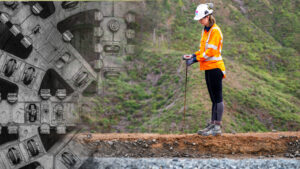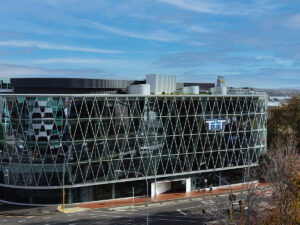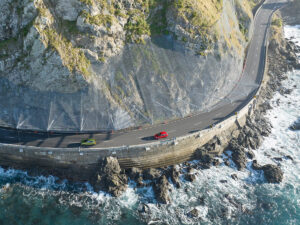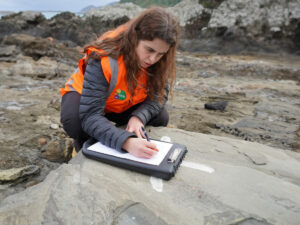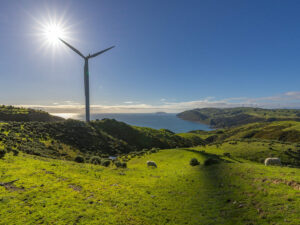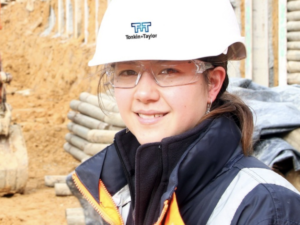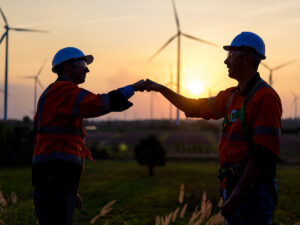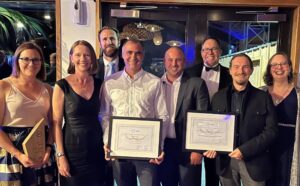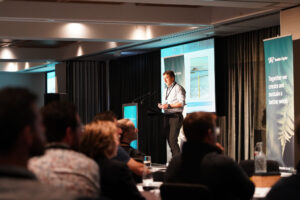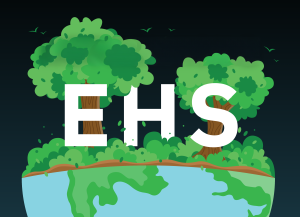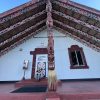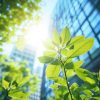In the heart of the South Pacific lies Niue, a small island with a big spirit. Known as “the Rock,” it is the world’s largest raised coral atoll, rich in culture and natural beauty.
Yet, behind this picturesque landscape, the island faces unique environmental challenges, especially in waste management. The complexities of managing solid and hazardous waste on a small island present both obstacles and opportunities that call for practical, sustainable solutions.

Tonkin + Taylor’s Discipline Manager – Environmental AU, Donna Shiel, had the pleasure and privilege to travel to Niue earlier this year and work with the Secretariat of the Pacific Regional Environment Programme (SPREP) and the Niuean Government’s Department of Environment (DOE), to develop Niue’s National Solid and Hazardous Waste Management Strategy.
During her week in Niue, Donna led two half-day workshops with key government stakeholders, NGOs, and community leaders, where aspirations, challenges, and innovative ideas were explored. Donna was also given a tour of the island, visiting dumpsites, waste stockpiles, hazardous waste areas, the new Resource Recovery Centre, the Hikulagi Sculpture Park, the medical incinerator, and more. Throughout, insightful conversations were plentiful, and the generosity of everyone’s time was remarkable, particularly given that most on the island juggle multiple responsibilities.
The Challenges with Legacy Waste
As you journey around the island, traces of Niue’s past reveal themselves in the villages, winding tracks that lead to hidden rock pools and caves, and the occasional sight of weathered structures, and family graves that allude to the island’s history. Niuean’s have a deep connection to their land, with many choosing to bury their loved ones on their property, leaving no formal graveyards on the island. However, this connection is also seen in the many homes left to deteriorate as people move abroad for better opportunities, leaving behind a growing challenge of legacy waste.
The island has also struggled with asbestos, particularly after Cyclone Heta in 2003, which damaged many homes and exacerbated the presence of asbestos roofing. Although a tender is now open to pack and ship this hazardous material, the challenge remains, adding to the burden of managing outdated infrastructure and e-waste.
A Need for Collaboration and Practical Solutions
During discussions with Niue’s DOE, it became clear that any waste management strategy must not be a plan that sits on a shelf. The island’s small population, where “everyone wears multiple hats,” necessitates a collaborative and inclusive approach to waste management. The DOE’s desire for a strategy that involves community ownership reflects the Niuean value of shared responsibility. Stakeholders have expressed frustration with past strategies, citing a lack of delivery. Ensuring that this new strategy fosters accountability and actionable outcomes is paramount.
Our recent waste audits helped us build strong connections within the Niuean community, fostering collaboration and openness to our involvement from the outset. Building on this positive momentum, we must continue to collaborate with local leaders, NGOs, faith-based groups, and the private sector to ensure this strategy is not only implemented and owned by the community, but fully supported by them too.
Emerging Waste Management Challenges in Niue
While Niue has made strides in waste minimisation and recycling efforts, new challenges are emerging. Disaster waste, e-waste, and materials from electric vehicles, solar panels, and appliances pose growing threats to the island’s waste management systems. Removing waste materials from an isolated island like Niue incurs high costs, with international shipping routes dictating the pace of waste exports.
One particular concern is the handling of old vehicles, which have become more difficult to repair due to computerisation and the island’s lack of skilled mechanics. The upcoming 150% duty on cars over 15 years old (or $5,000, whichever is higher) may help curb the importation of outdated vehicles. However, it also raises questions about affordability and accessibility for locals. Finding solutions that balance environmental sustainability and economic viability is crucial.
Practical and Manageable Solutions
The Niuean community has expressed a clear preference for waste management solutions that are practical, manageable, and serviceable rather than flashy or complex. Past investments in technology, such as the now-idle Hot Rot composting machine, underscore the need for systems that can be easily maintained and repaired. This pragmatic approach must underpin our strategy development, ensuring that local communities can readily operate the tools and infrastructure introduced.
Village inspections have proven valuable in identifying community challenges, while waste minimisation efforts during COVID showcased the island’s resilience. Encouraging public-private partnerships and leveraging the private sector’s knowledge and capabilities can help fill gaps in capacity and skills, particularly in areas like vehicle repair and recycling. These partnerships can foster innovation while supporting Niue’s long-standing cultural values of responsibility, pride, and environmental stewardship.
Looking Forward: A Strategy for Niue
As we shape Niue’s five-year Waste Management Strategy, we must consider the island’s environmental, economic, and cultural context.
The guiding principle is simple: the strategy must be actionable and achieve tangible outcomes. This means linking waste management actions to broader frameworks like climate resilience, disaster mitigation, and regional strategies such as SPREP’s Cleaner Pacific 2025. At the same time, we must draw on the wisdom and knowledge of Niuean elders, ensuring the strategy reflects both traditional practices and modern realities.
Niue’s challenges are manageable. Michael Dudley from TechCollect NZ explored potential e-waste solutions during his recent visit, indicating a growing interest in innovative waste management approaches. A possible partnership with the private sector to recycle and repurpose waste streams offers new avenues for collaboration.
The strategy we are developing must address existing challenges and anticipate future needs. By prioritising emerging issues like disaster waste and electric vehicle disposal and ensuring that the strategy remains flexible to adapt to future pressures, Niue will be better equipped to meet its waste management goals.

Climate Resilience for Future Generations
Niue is a small island, but it is rich in resilience, culture, and environmental stewardship. Its waste management challenges are significant, but with practical solutions, collaboration across sectors, and strong community ownership, the island can lead the way in sustainable waste management practices in the Pacific region.
As we continue to work alongside Niuean’s to develop this strategy, we do so with a deep respect for the island’s culture and a commitment to creating an implementable, actionable plan that will ensure Niue remains clean, green, and resilient for generations to come.

For more information on our projects in the Pacific, visit our Pacific Development and Resilience page.



